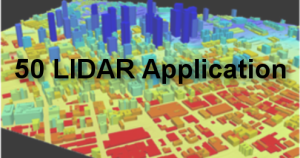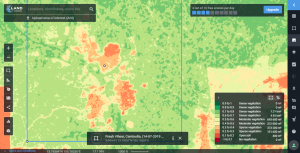Radar is a system that works on high-frequency signal out transmission toward a target. After the signal bounces back from the target and returns, the radar uses the received information to identify the relative location and speed of the target. Military uses this technology as a booth, defensive, and offensive tool. RADAR means Radio Detection And Ranging.
1. Targeting radars
These radars search smaller zones more frequently to find a target. Some of these radars, ground-based targeting radar, are used to differentiate between moving, stationary targets, and clutter. Airborne radar also distinguishes between the moving, ground, and clutter targets. The radar is also carried by a moving aircraft, thus compensating for the Doppler frequency shift of the clutter.
2. Weather sensor Radar System
A Pulse Doppler radar system is a weather radar that bounces microwave signals off a target. The doppler radar tower sends the sign out in circular patterns, and the movements get scattered on coming to contact with precipitation, but some of them are returned. Precipitation intensity dictates the amount of the returning signals. The distance and speed of the storm are then identified by measuring the doppler effect, and the time it takes the radio signals to return to the radar tower. The military uses weather sensing for both traffic control and aircraft.
3. Mapping radar
Mapping radar creates ground and terrain mapping without darkness, cloudiness, and other factors influencing visual detection. Those used in aircraft are; synthetic aperture radars which generate a two-dimensional or a three-dimensional map showing the ground features and the terrain ahead of the aircraft.
4. Instrumentation radar
These tracking radars are measuring devices on military ranges and test facilities. They are employed to measure metric performance data on aircraft, missiles, and satellites.
5. Navigation radar
Navigation radar resembles the search/detection radar but uses a short wavelength reflecting earth and stones. They are used by ships and aircraft to avoid collision on paths. General purpose radars working as navigation radars can easily differentiate between vehicles, land, and stormy weather.
6. Proximity fuses
Proximity fuses are used in anti-aircraft artillery(AAA) rounds. Having anti-aircraft artillery rounds exploding when it passes near a target increases the chances of hitting a target and not blowing above or below. Its ranging optical sensor sends pulses to a target and detonates a predetermined distance from the target.
7. Searching and rescue radar
These radars use short radio waves to detect large regions/air/surfaces to determine the aircraft’s approximate range, angle, or speed. They include early warning radar and acquiring targets, surface, and subsurface radar.
8. Radar warning receivers for tracking
The military deploys a radar warning receiver to notify the pilot whether a radar system is targeting them. This is achieved by fixing multiple antennas around the aircraft’s external surfaces that listen to radio emission radars and use the cockpit display t alert the pilot of the relative direction and distance to the source of the incoming radar signal.
9. Traffic air control radar
The military uses radar to control air traffic like usual civilian radar. These radars acquire their use in aircraft landings.



